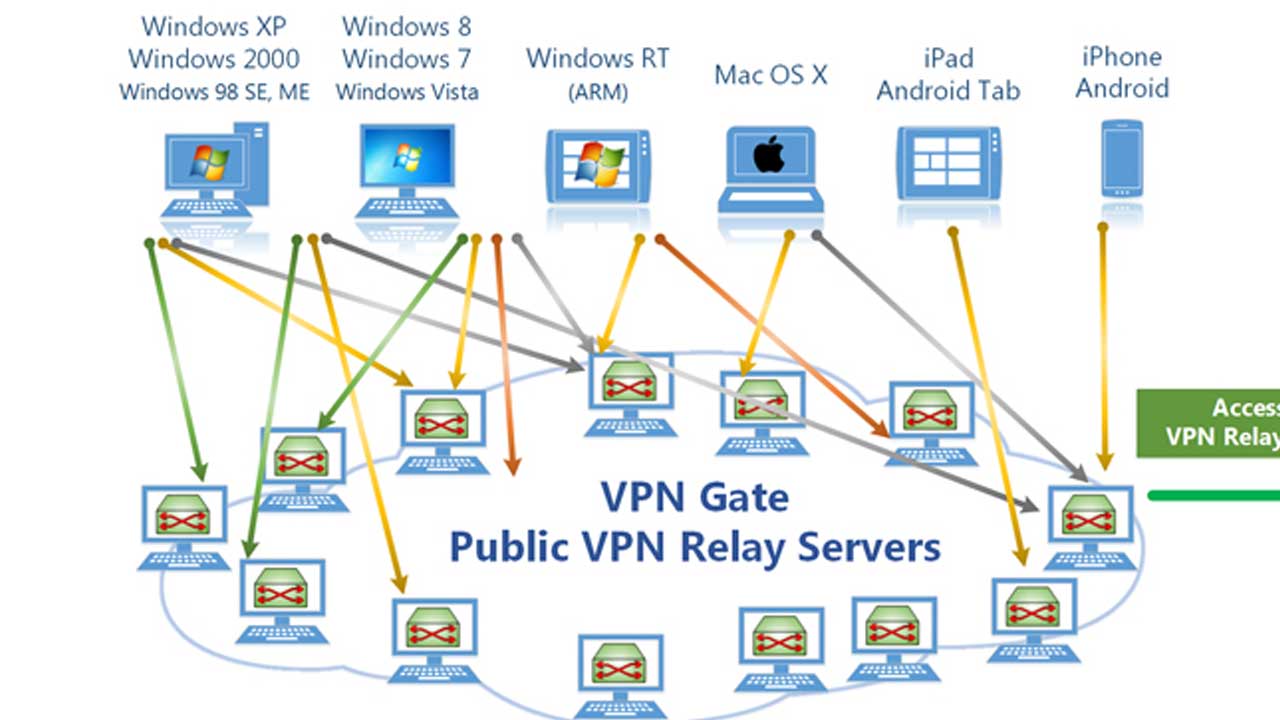VPN Gate is an experimental experiment carried out by the University of Tsukuba Graduate School, Japan. It is open-source, online, and provides about 6608 volunteer servers worldwide.
VPN Gate follows the SSL-VPN protocols of OpenVPN, L2TP/IPSec, MS-SSTP, and SoftEther VPN. It has a free anti-censorship instrument operated by volunteers across the globe. But it will not be pushed to the top of the best VPN list by confidence problems, logging, and erratic speeds.
Gate VPN is free. Without registration, anybody can use it. In reality, the project developers at the University of Tsukuba describe in realistic terms their decision to keep the service free. Making VPN Gate a paid service will require it to comply with Japanese regulations on data protection and report directly to the government. If you didn’t know, Japan has some of the world’s most intrusive laws on data protection and anti-piracy.
For most of your traditional platforms, including Windows, Mac, Android, iOS, as well as any operating system that supports OpenVPN, VPN Gate is available. You can connect to any of the servers available either by manually configuring the settings of your computer, or by downloading the OpenVPN open-source software. Alternatively, you can use an open-source and stable SoftEther VPN client, too.
For an experienced user, the setup process is quick and hassle-free. If you are new to VPNs, the installation guide could allow you to spend a little more time. But the instructions are, luckily, simple and chock-full of screenshots and infographics. I checked two options: OpenVPN plus configuration files, and the VPN client from SoftEther.
Two items are required for the OpenVPN setup – the OpenVPN software and the configuration files. It was easy to get the latter: there is a frequently updated list of servers on the VPN Gate website. There are more than six thousand of them, as I described. It takes time to manually sort through the list, but the list also contains some helpful information, such as the length of the last session and the number of contacts made.
Configuration files come without a username/password, so it’s vpn/vpn even though some of them require authentication. It was a breeze to link and use the VPN Gate via OpenVPN.
At the same time, there will be a decrease in some connections, and here comes a significant VPN disadvantage. You have no guarantee that the server you are connecting to will be up as long as you need, because its servers are run by volunteers. Many of the servers on the list did not connect, but it only seems natural to have poor output for a volunteer-run network.
I also tried SoftEther VPN, which is also an open source alternative to OpenVPN and a viable alternative. It is referred to as SSL-VPN because it uses HTTPS and, therefore, TCP port 443-backed SSL/TLS encryption.
In layman terms, since this allows VPN traffic indistinguishable from standard HTTPS traffic, SoftEther VPN is good for protection. In this way, censors and firewalls fail to discriminate between VPN traffic and daily users. To bypass geo-blocks and local censorship, SSL-VPN works well.
By simply following the setup guide, I installed and linked SoftEther VPN in a matter of minutes. As a program, in addition to SSL-VPN, SoftEther VPN is loaded with advanced customization options and supports different protocols. Windows, Mac, Linux, FreeBSD, and Solaris, as well as Android and iOS, are also supported by SoftETher.
It is even simpler to use VPN Gate through SoftEther than with OpenVPN, since SoftEther comes with an embedded list of VPN Gate servers. You do not need to manually download them.
All you have to do with SoftEther is select a server and connect. The list of embedded servers can be sorted by various parameters, making it much simpler to select a functioning server.
If You Want To Visit Website, Click Below Button
Humbly Request To All Visitors!
If you found above both downloading link expired or broken then please must inform admin by fill this Contact Us! Form

